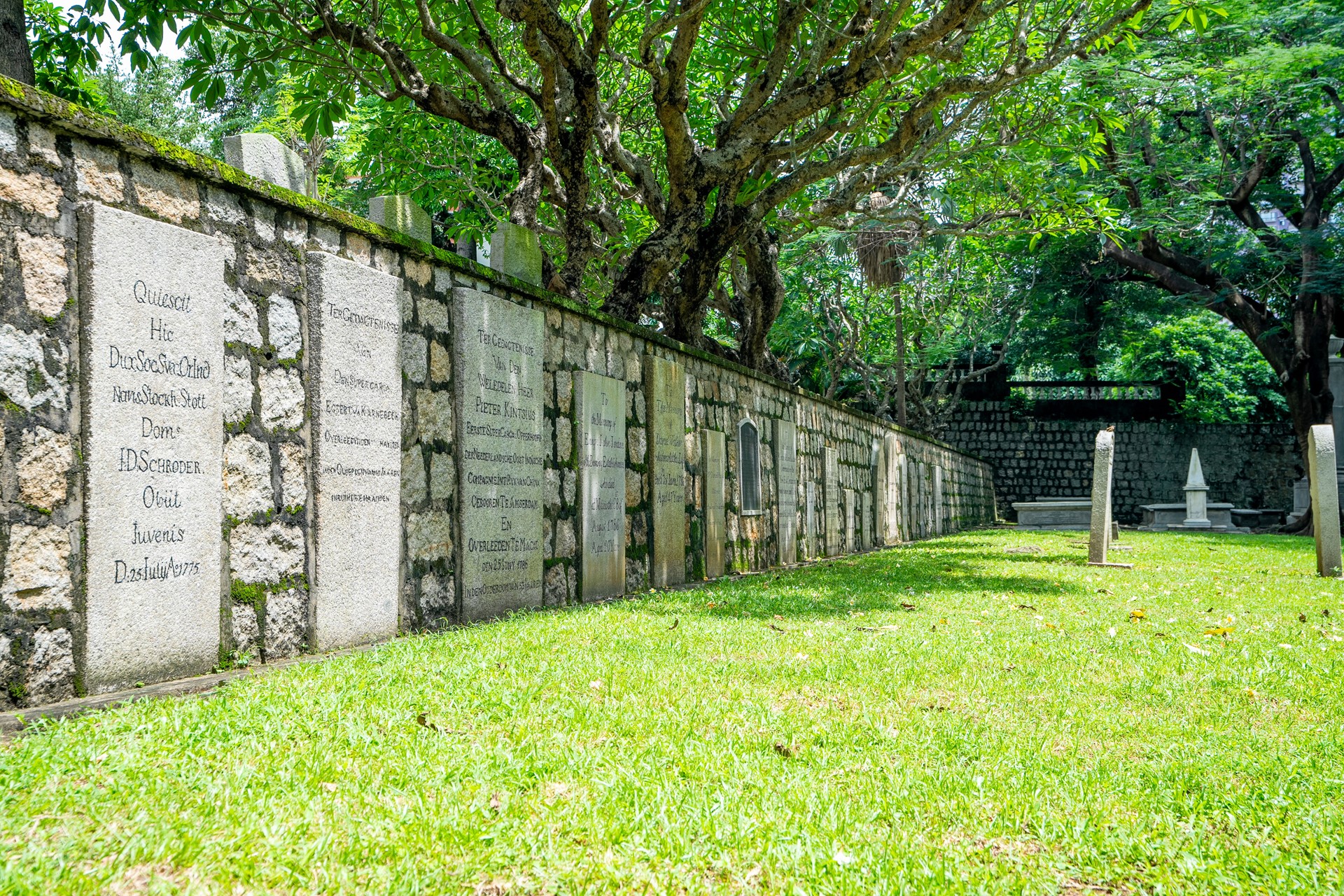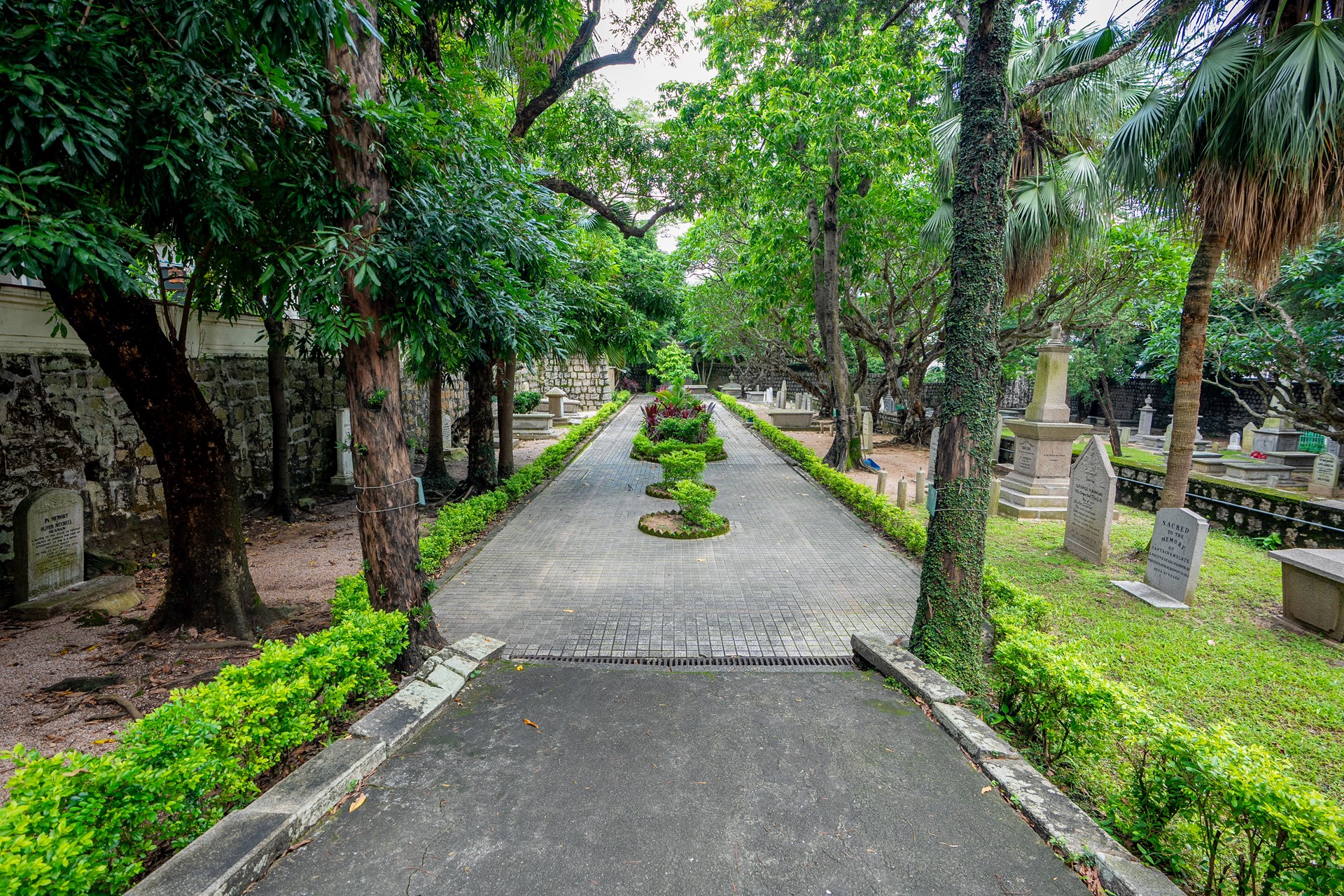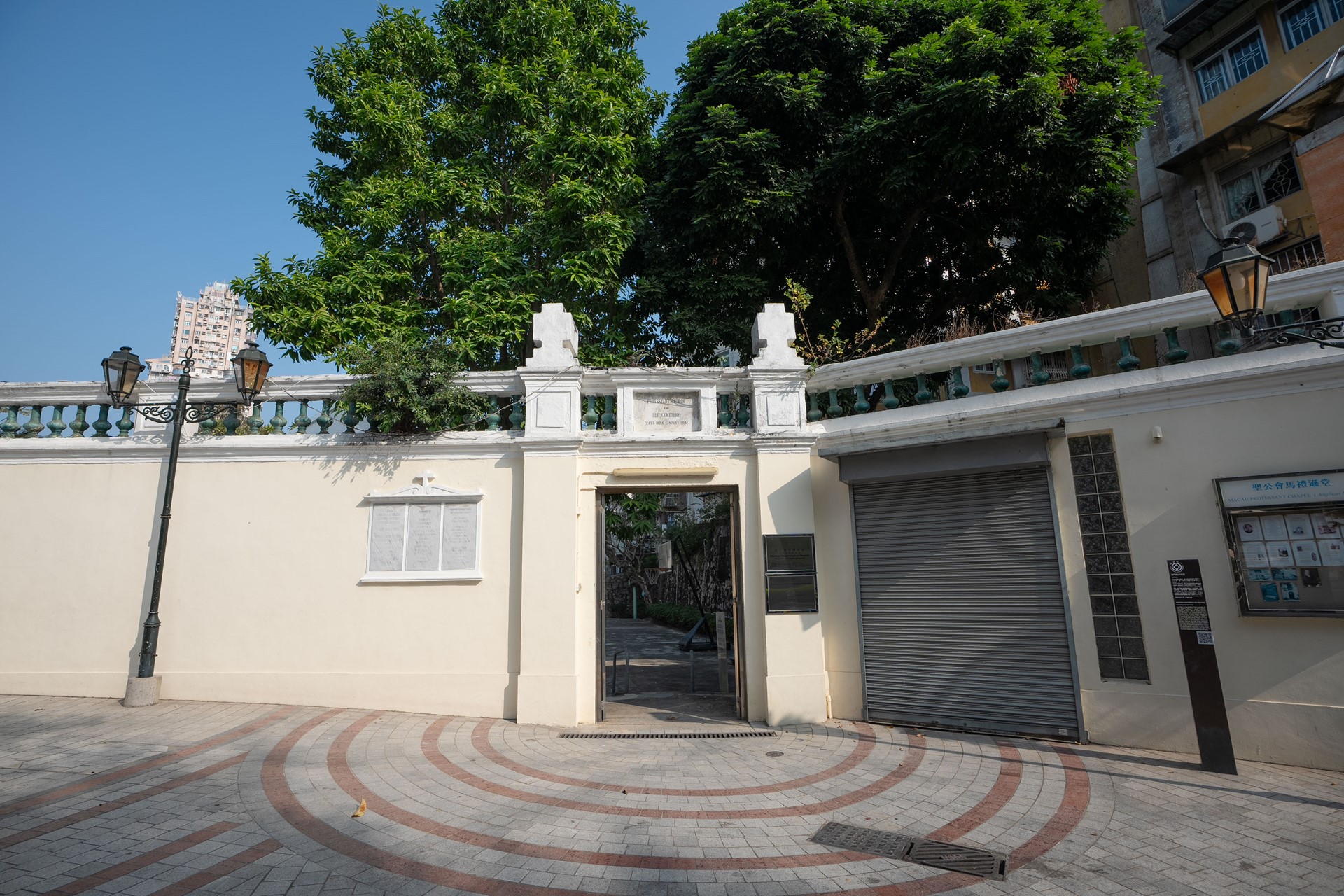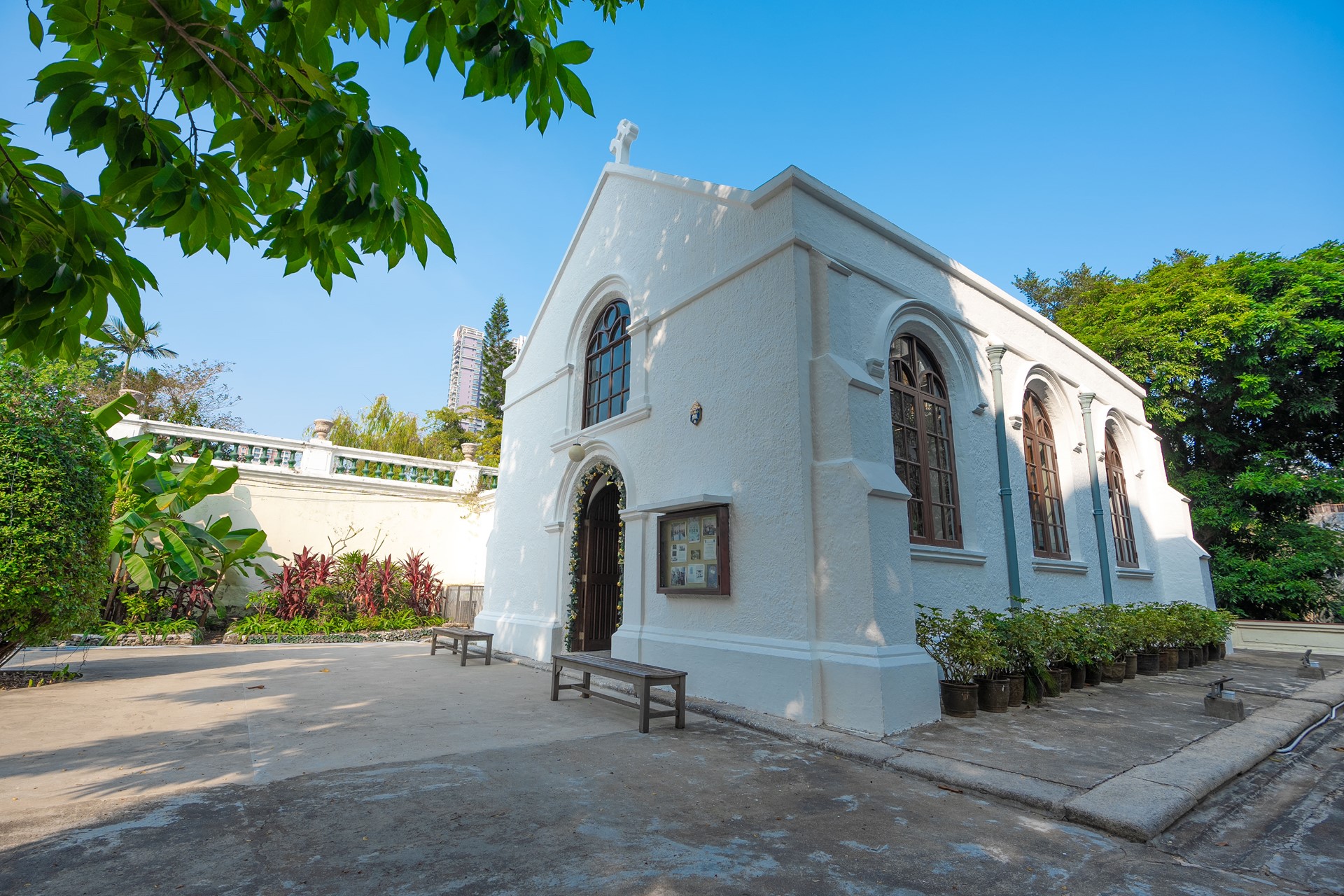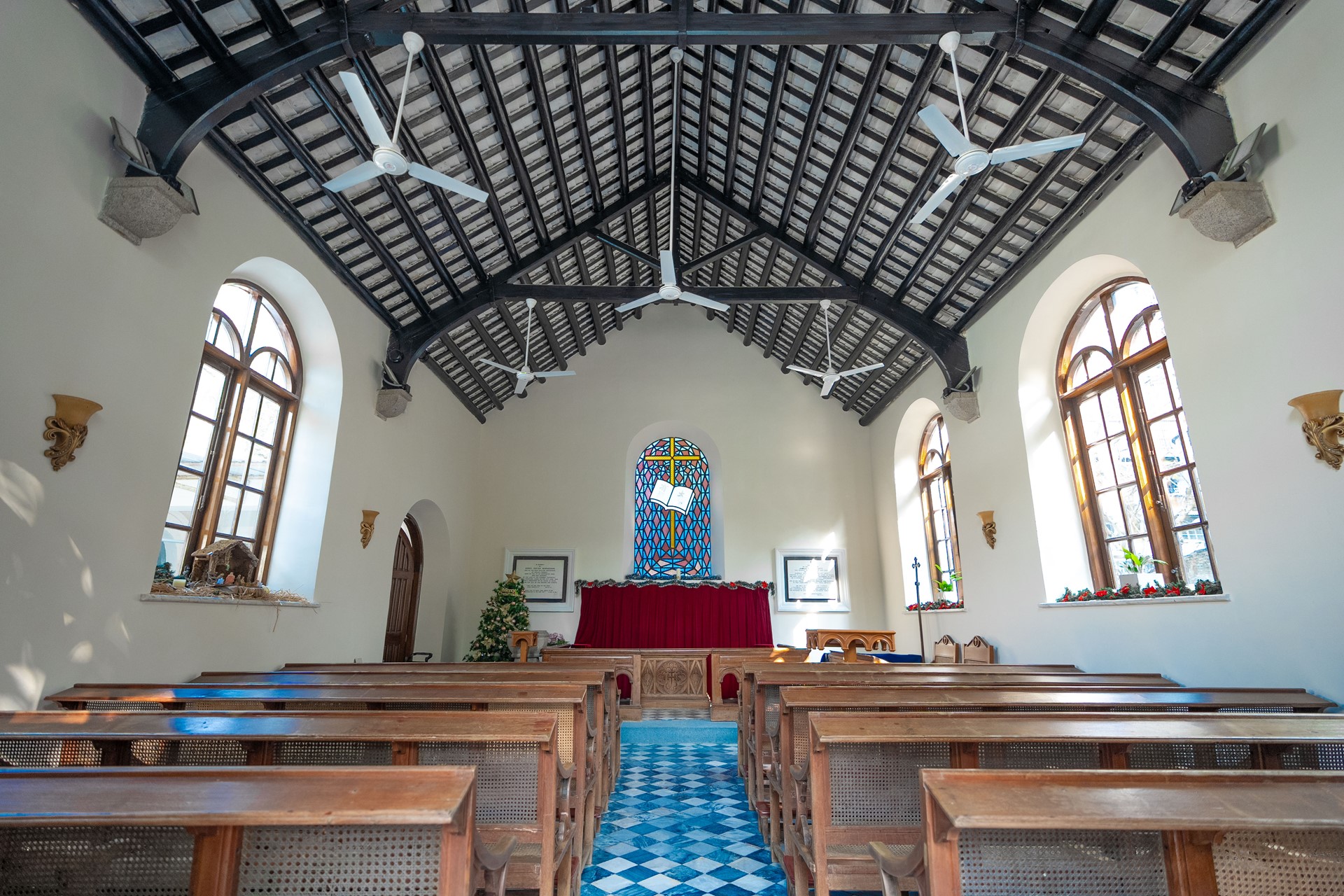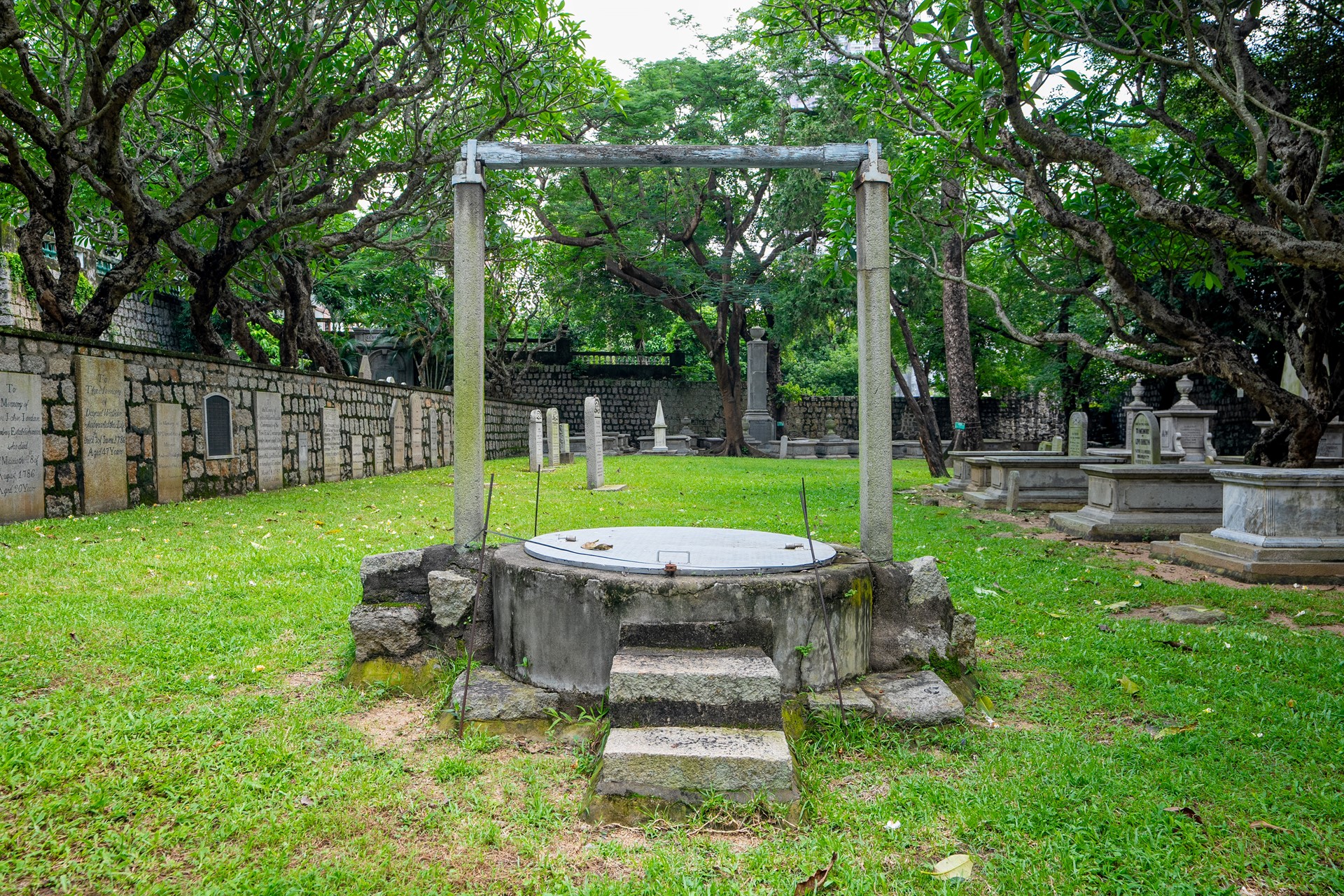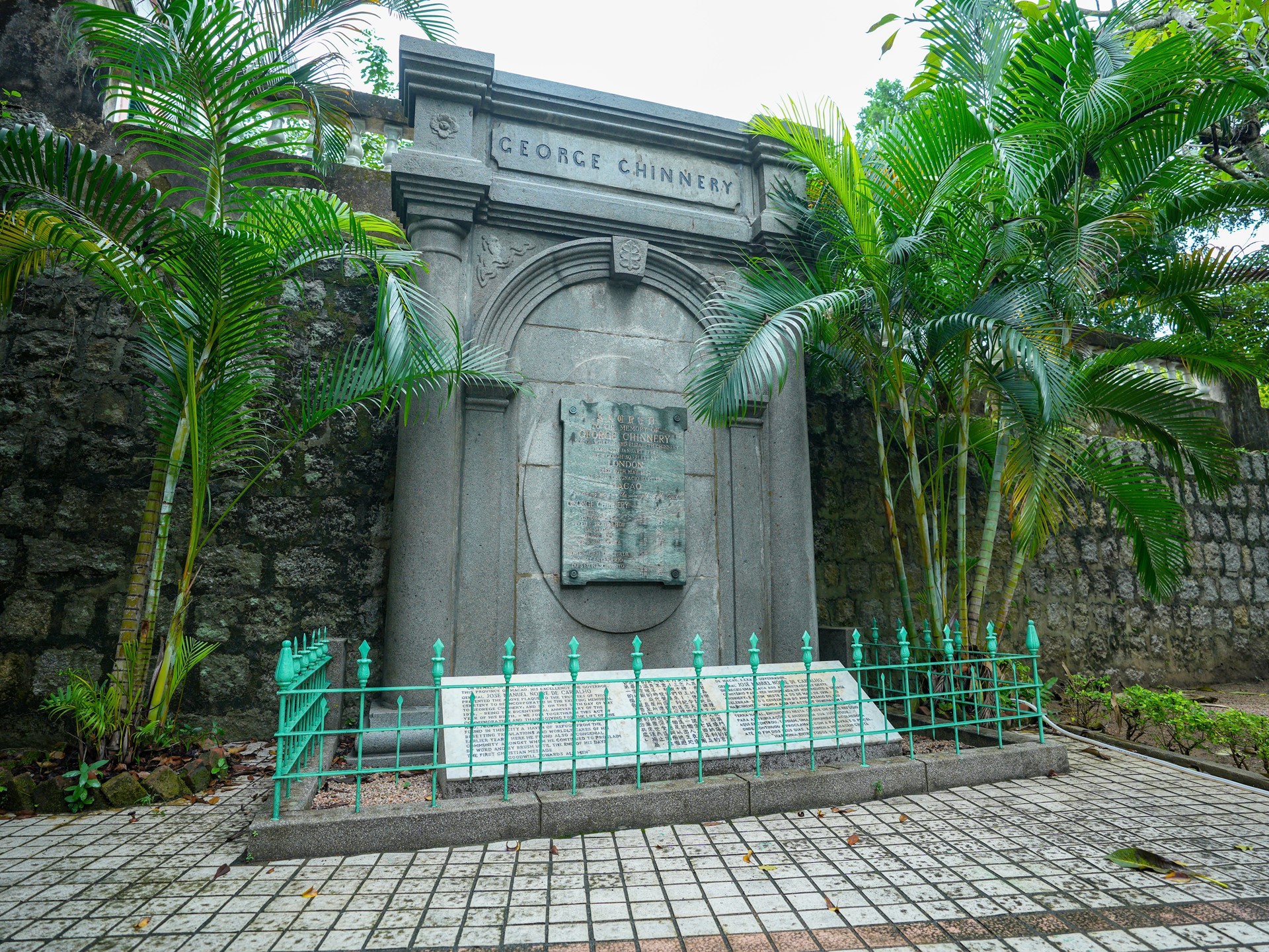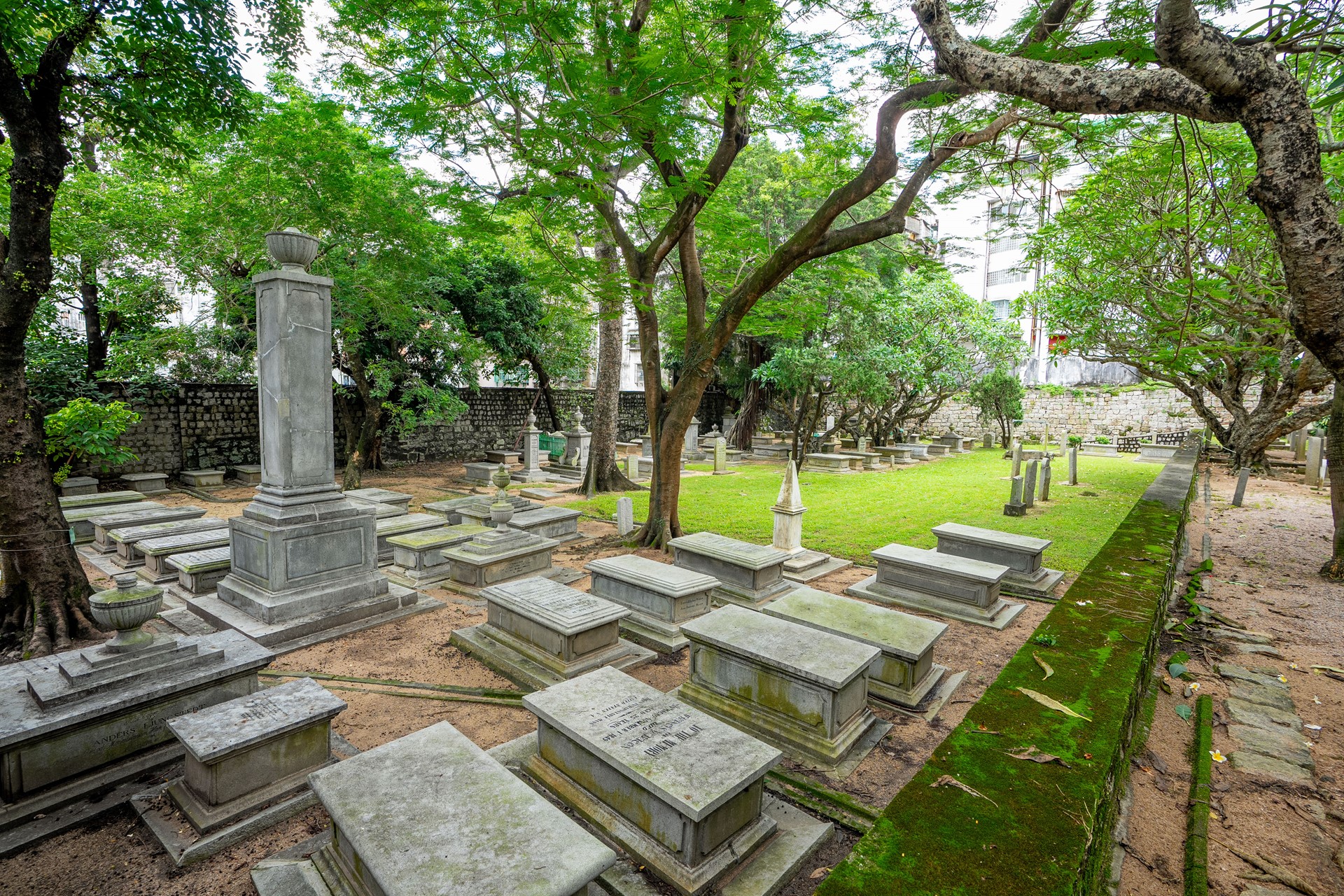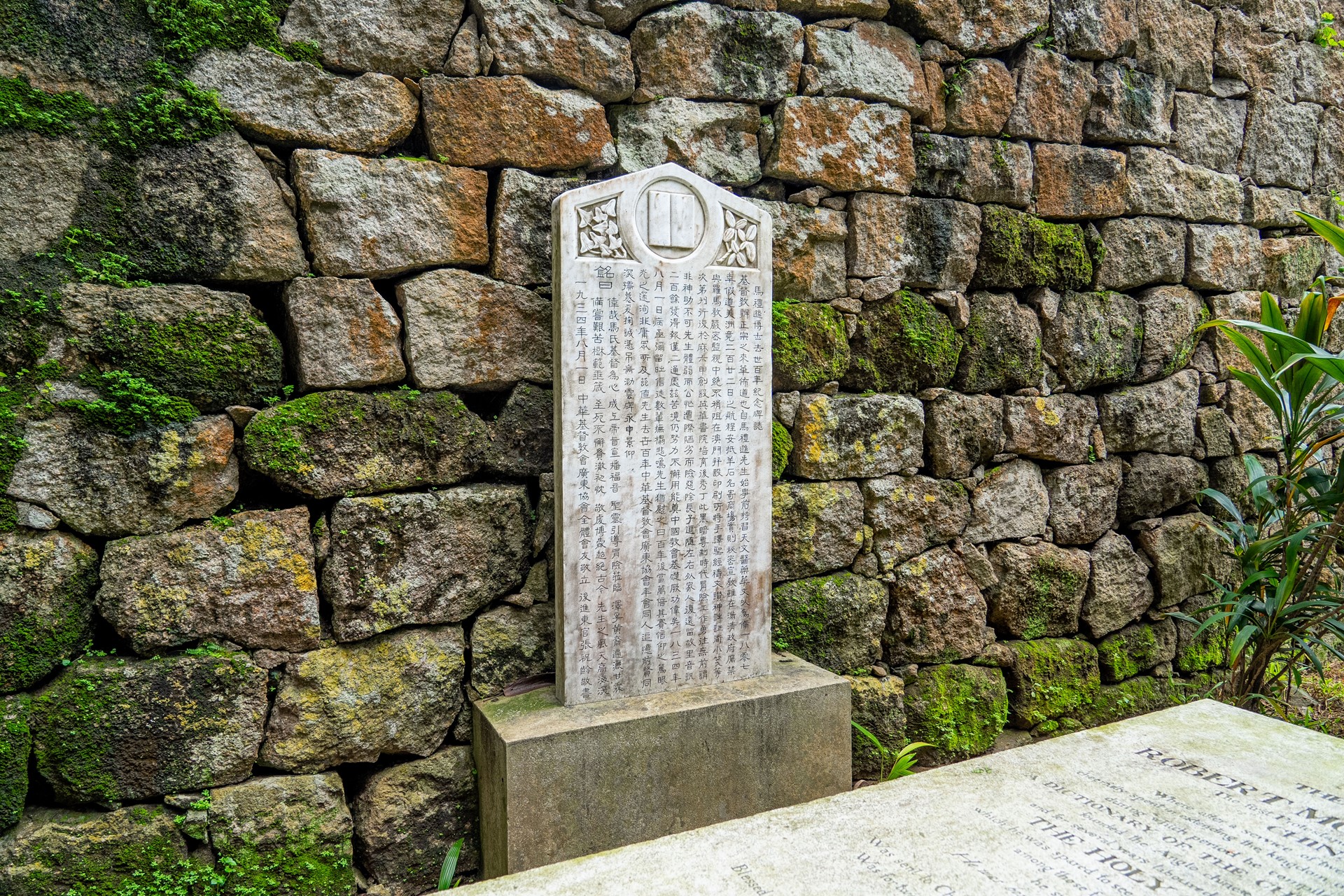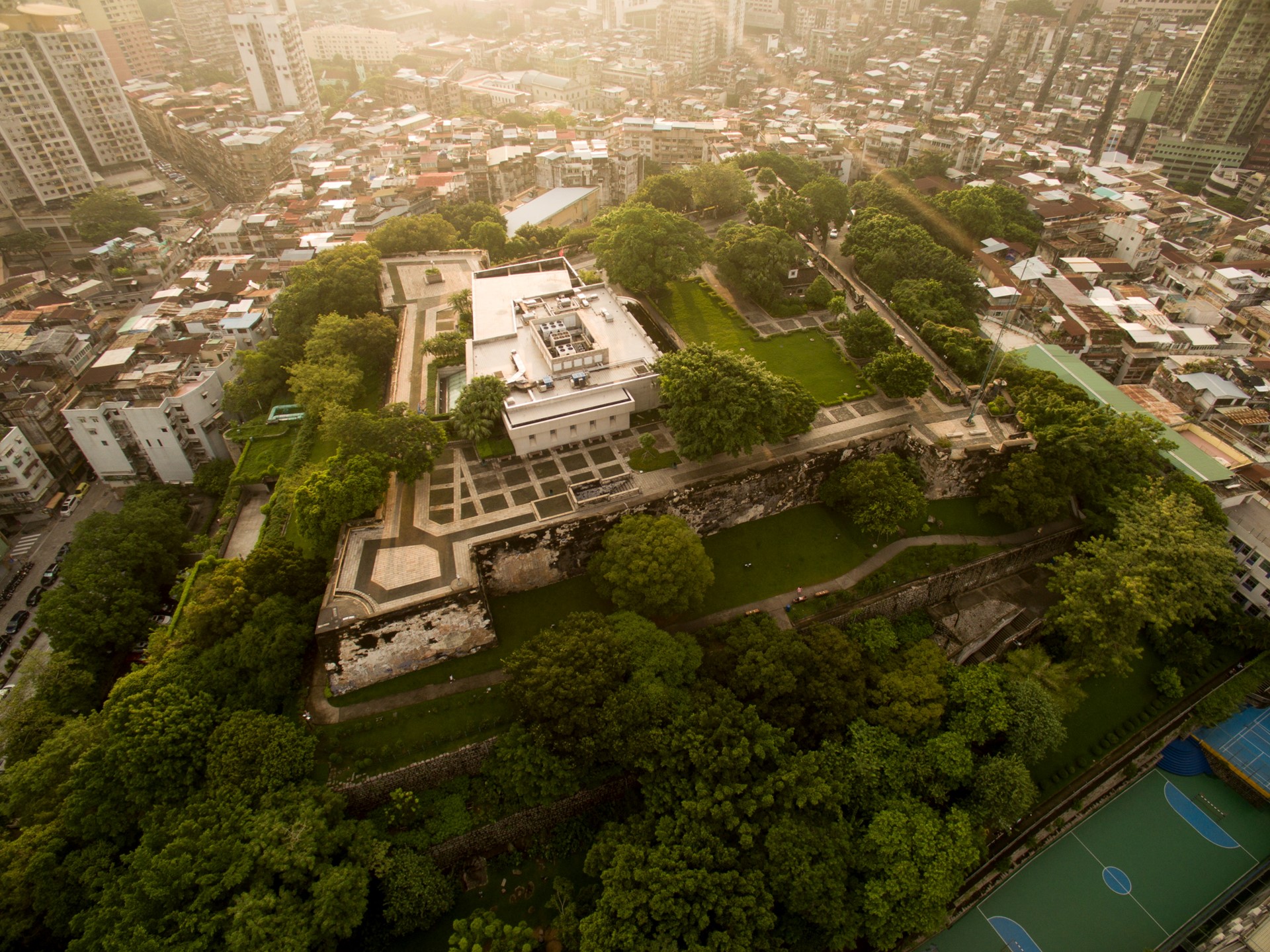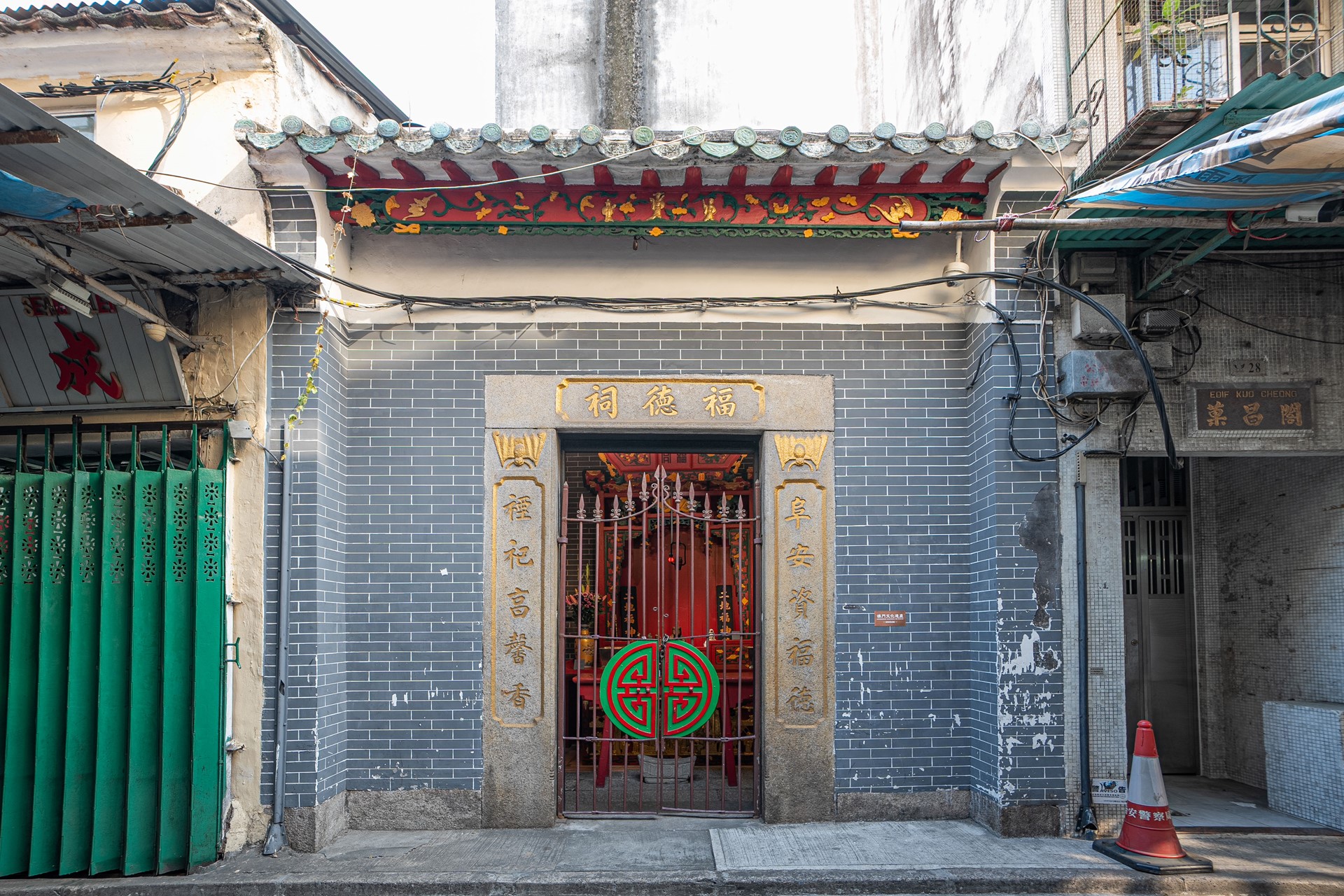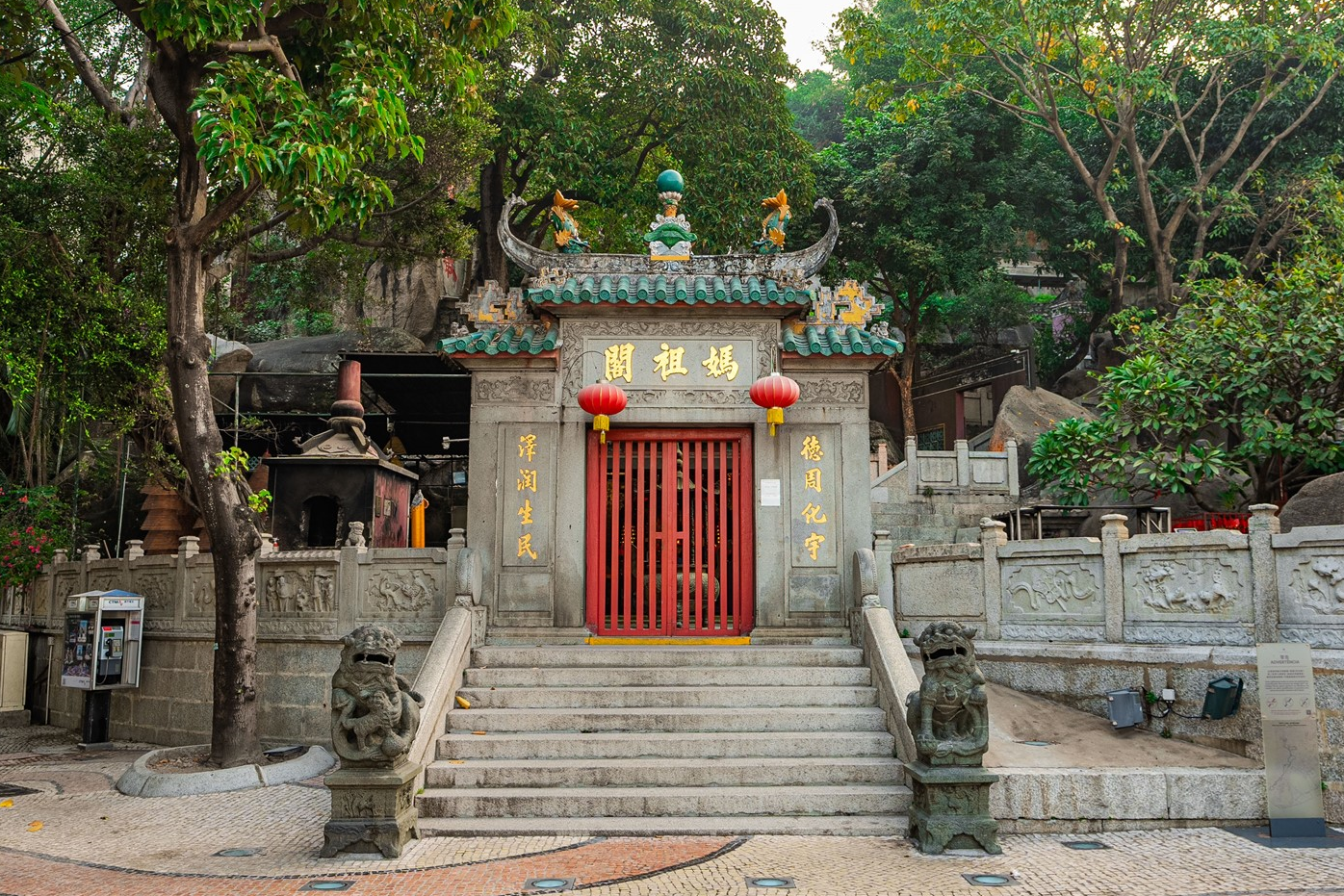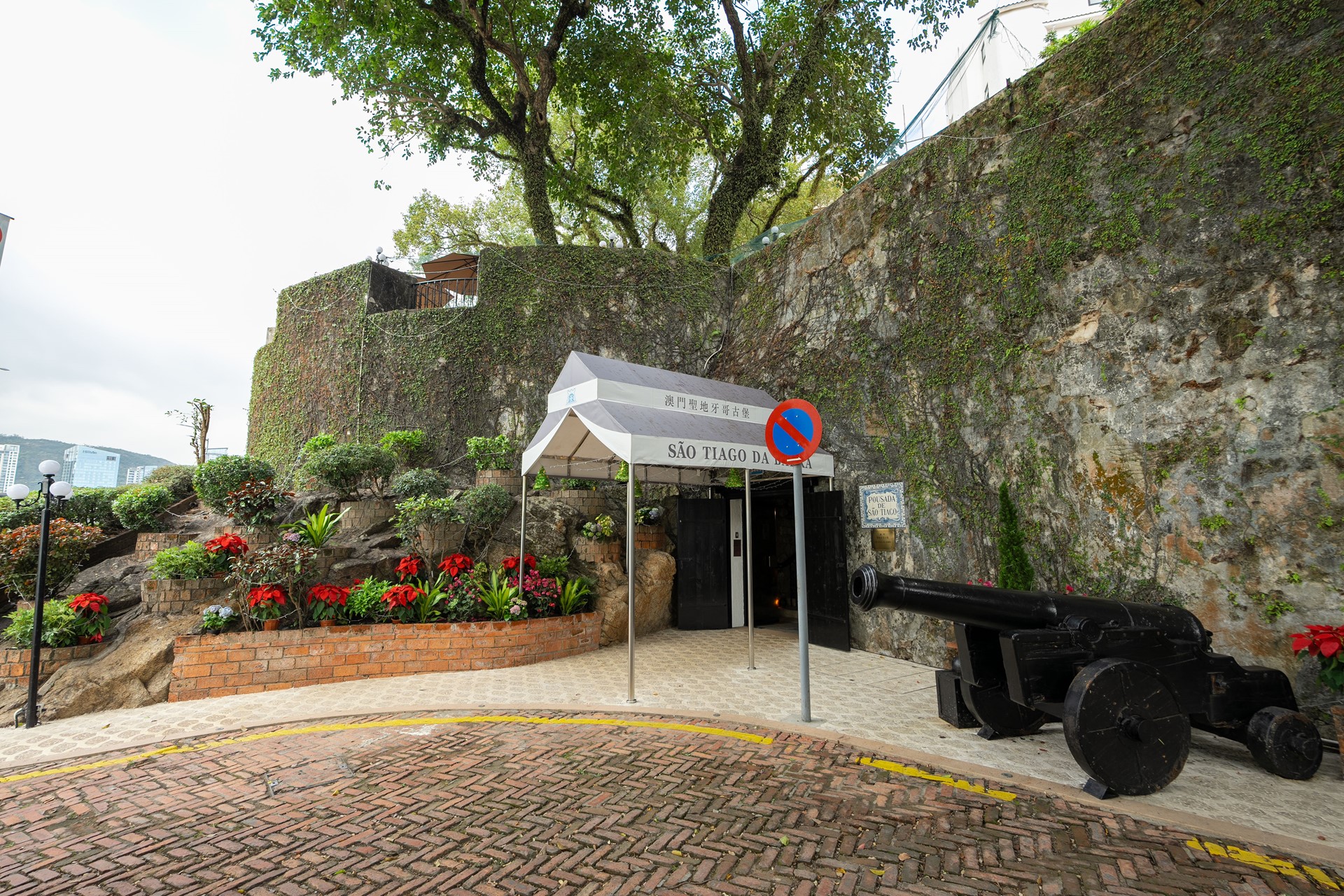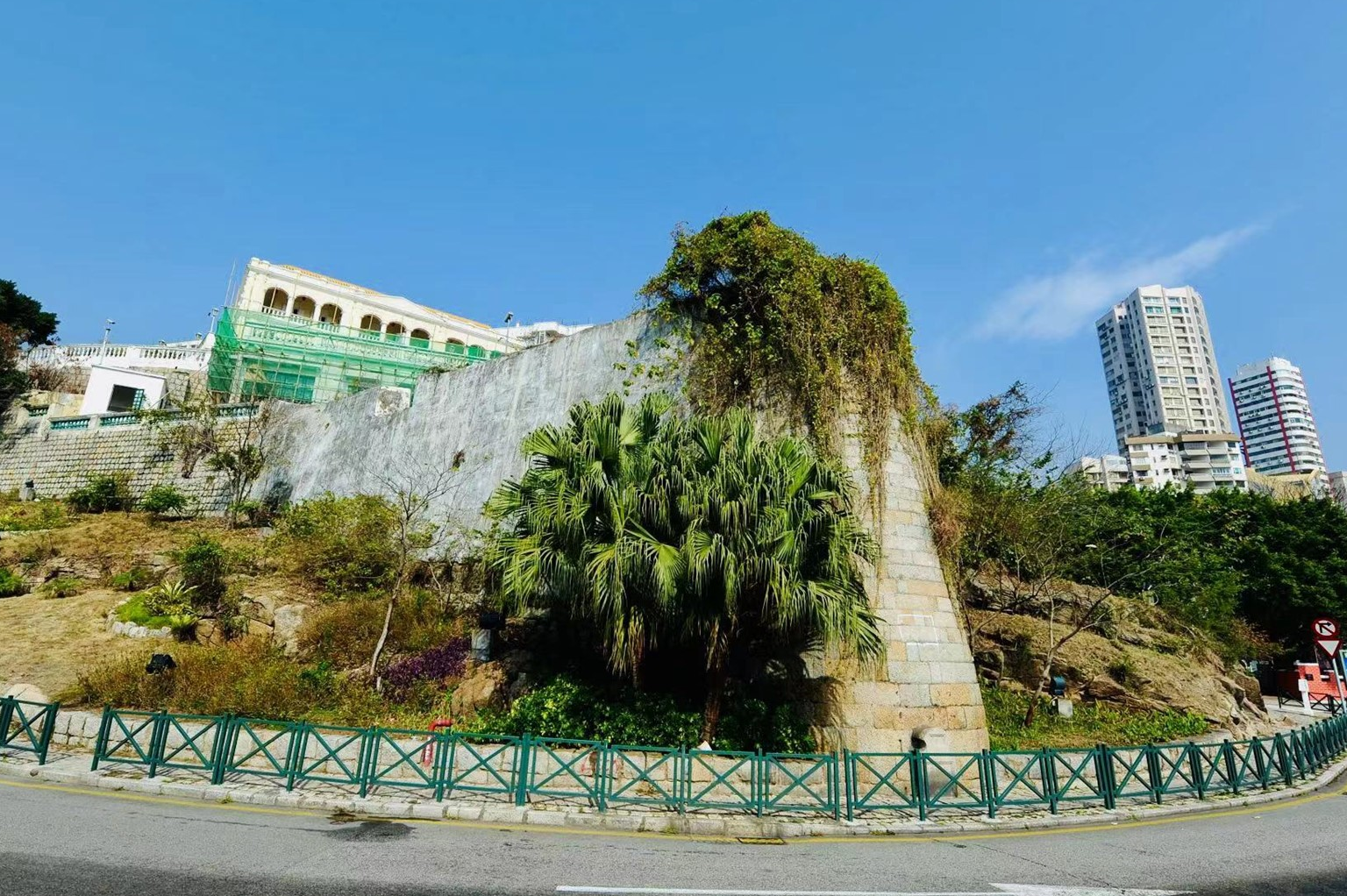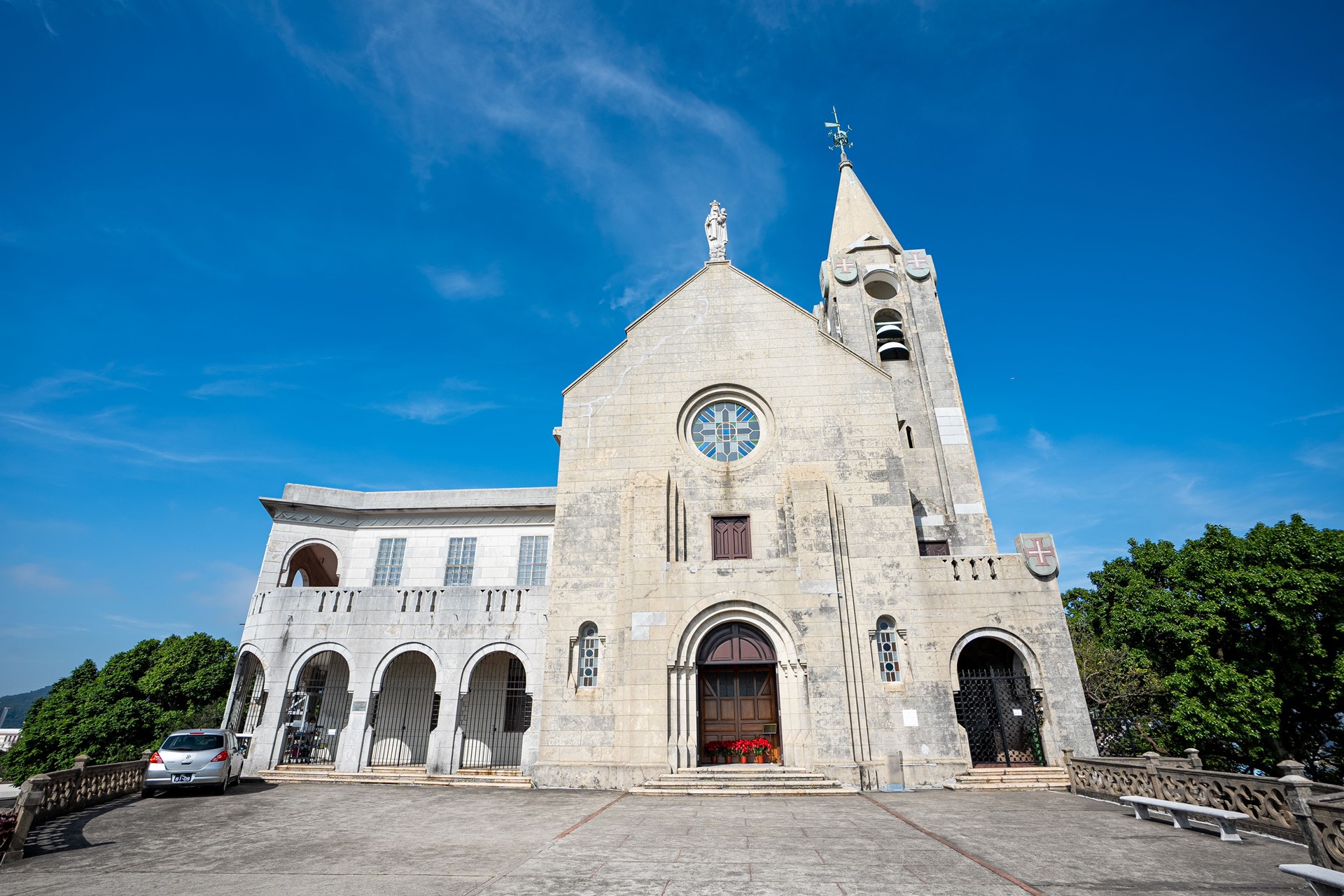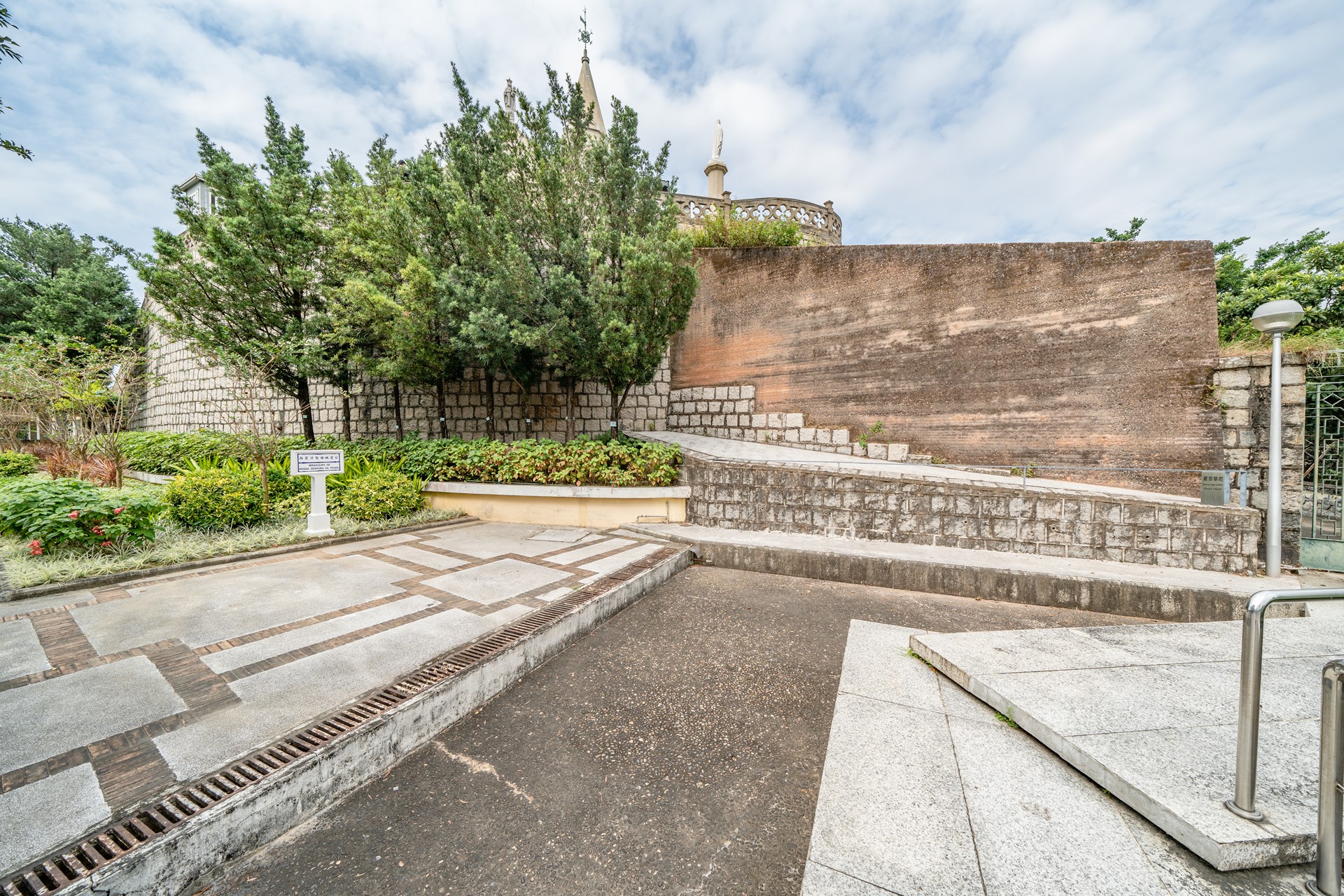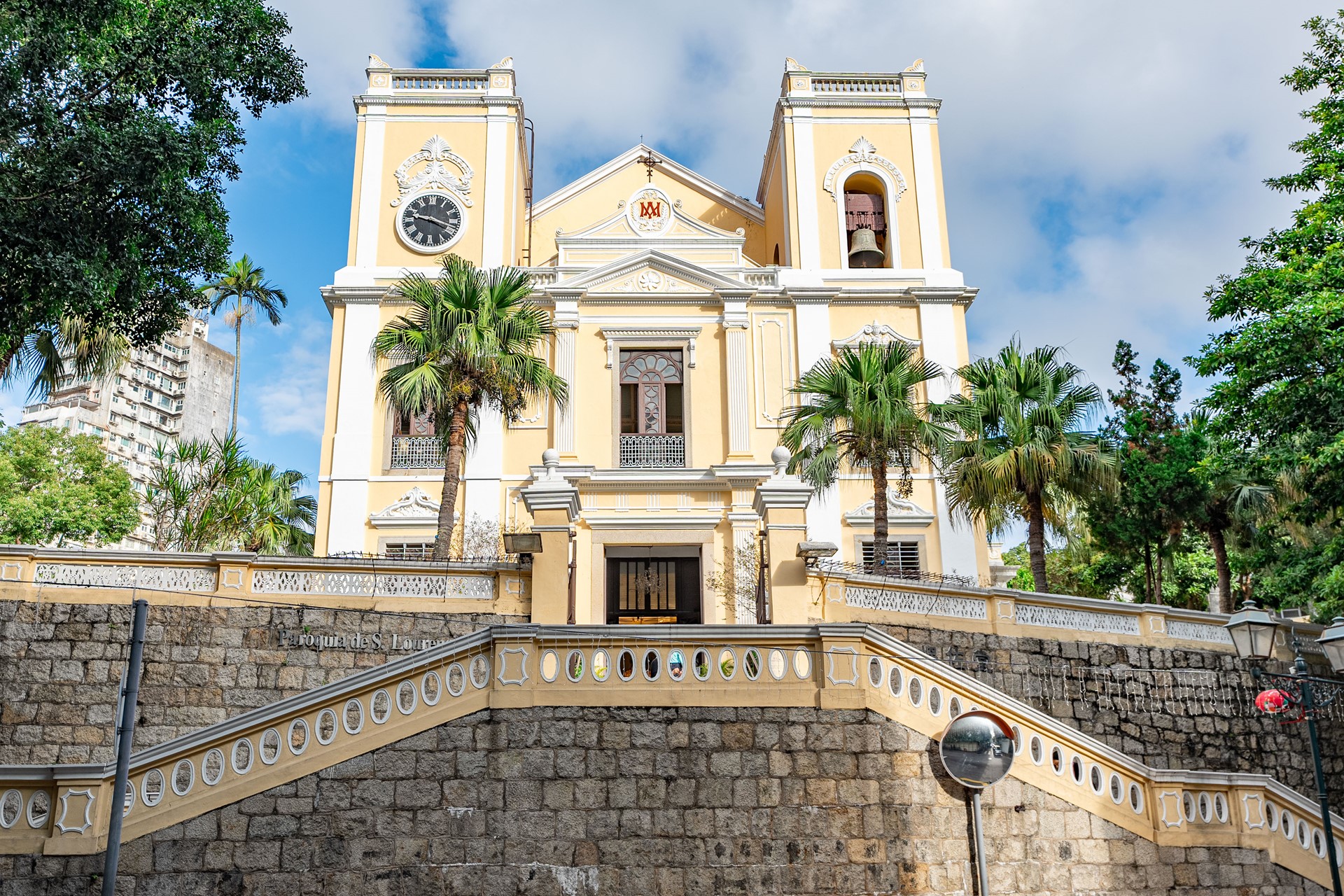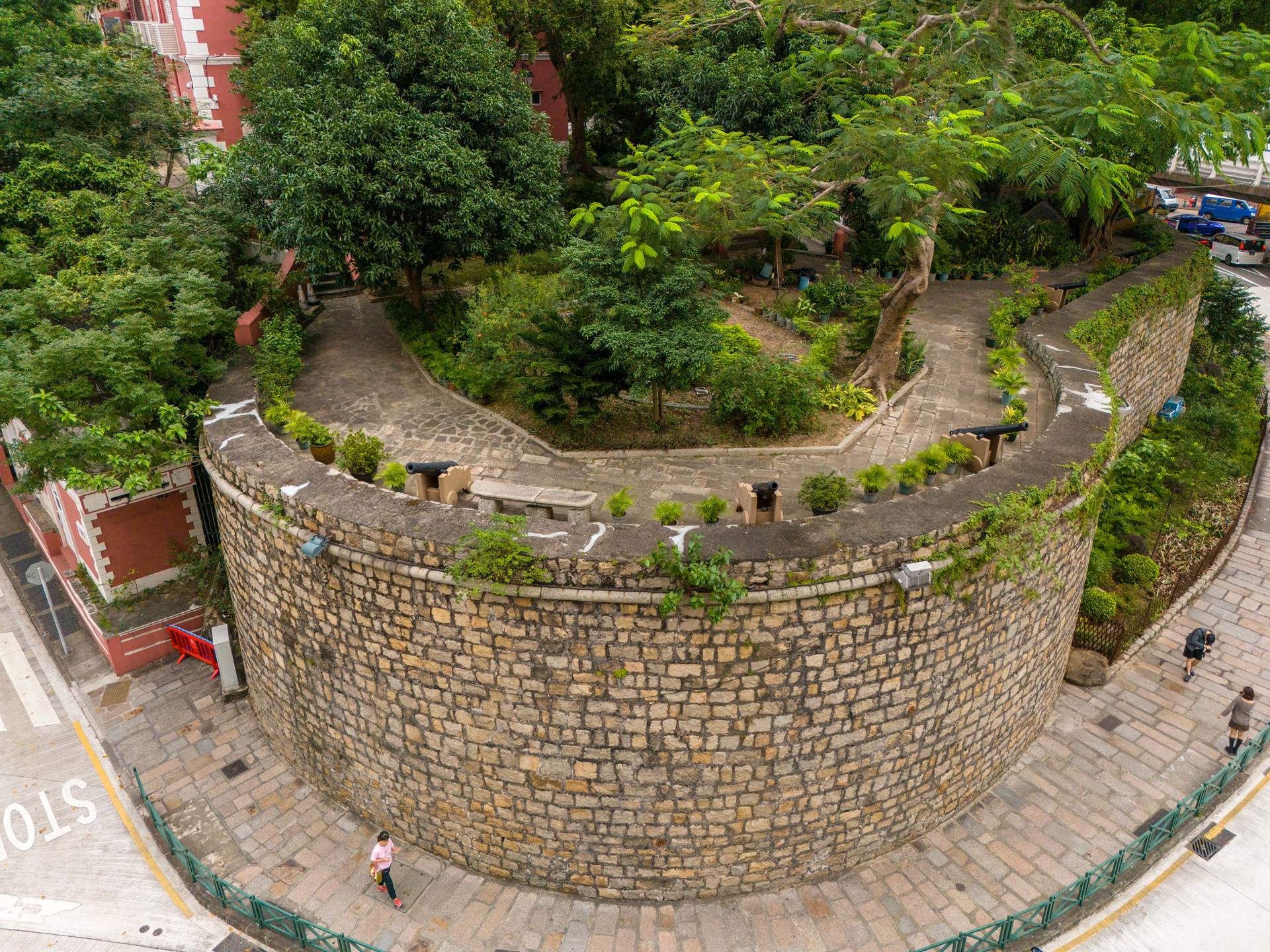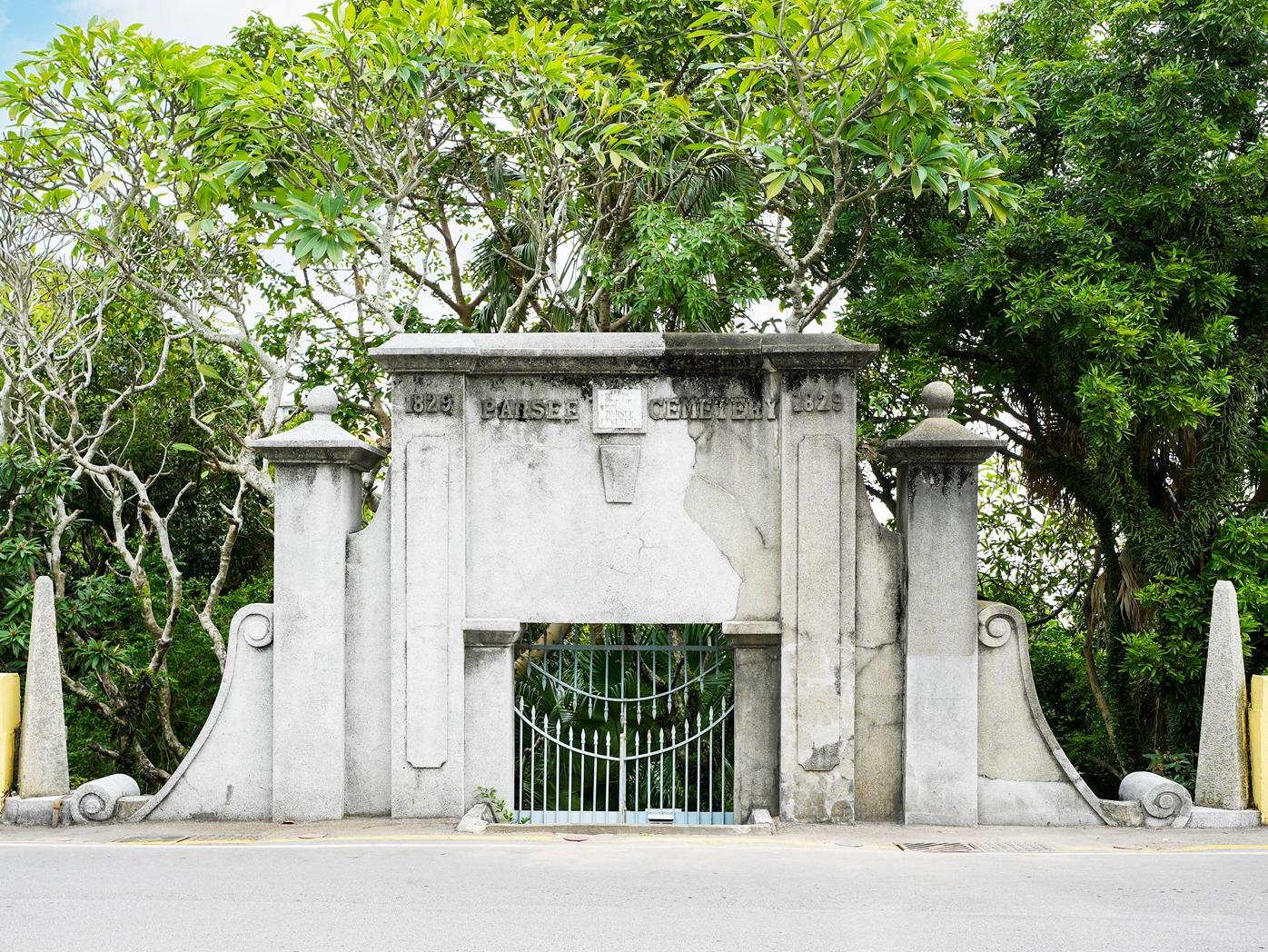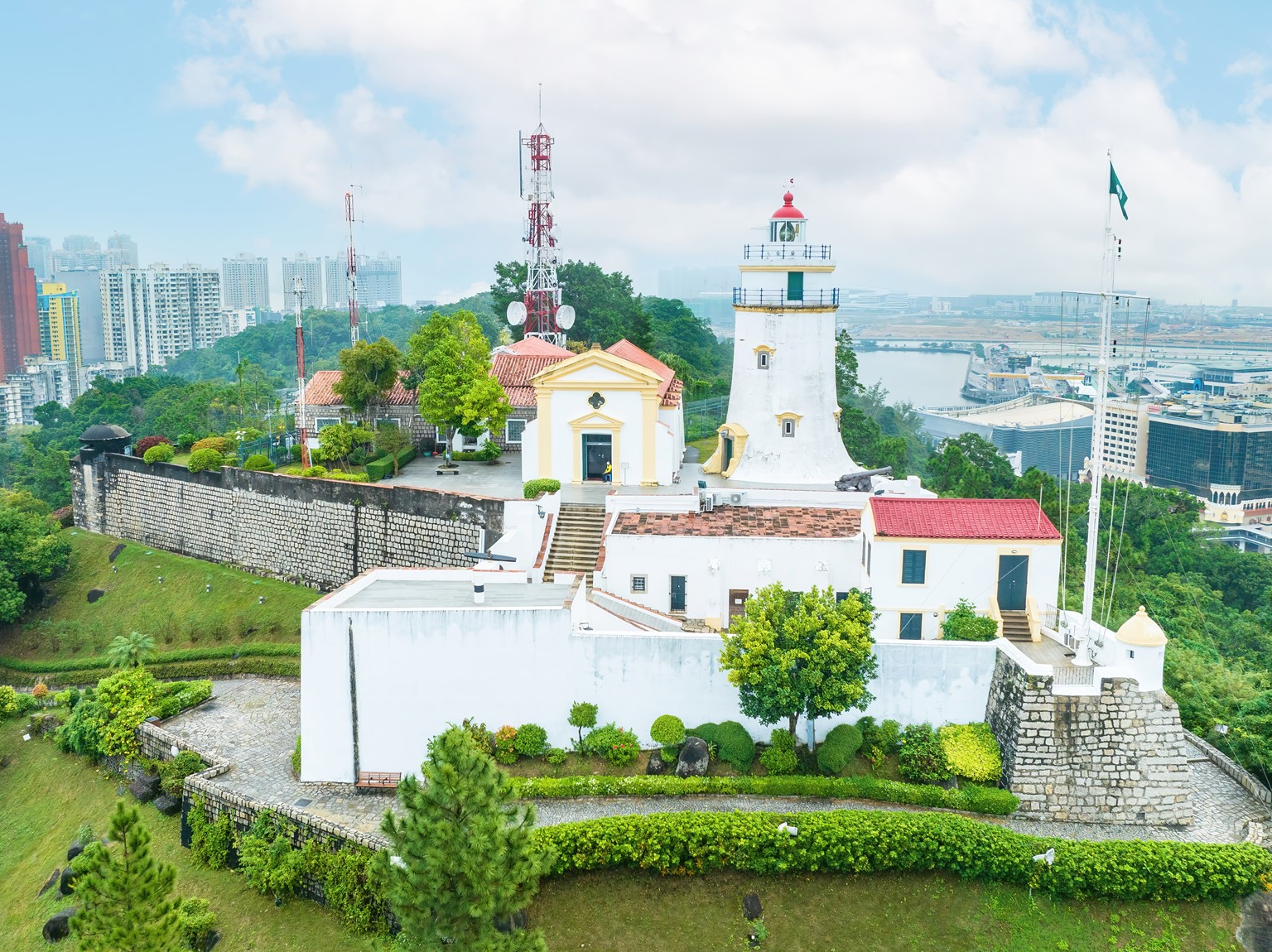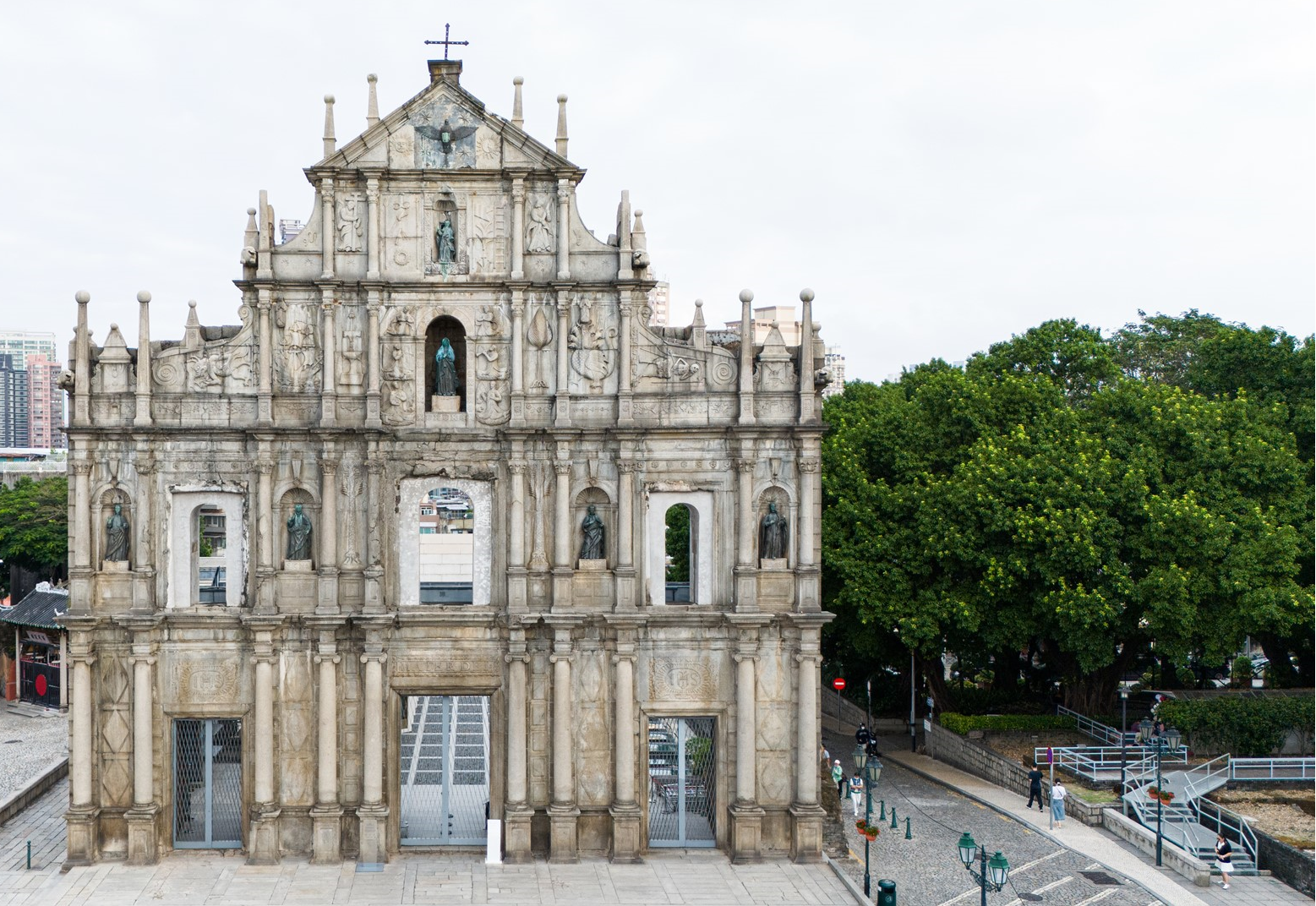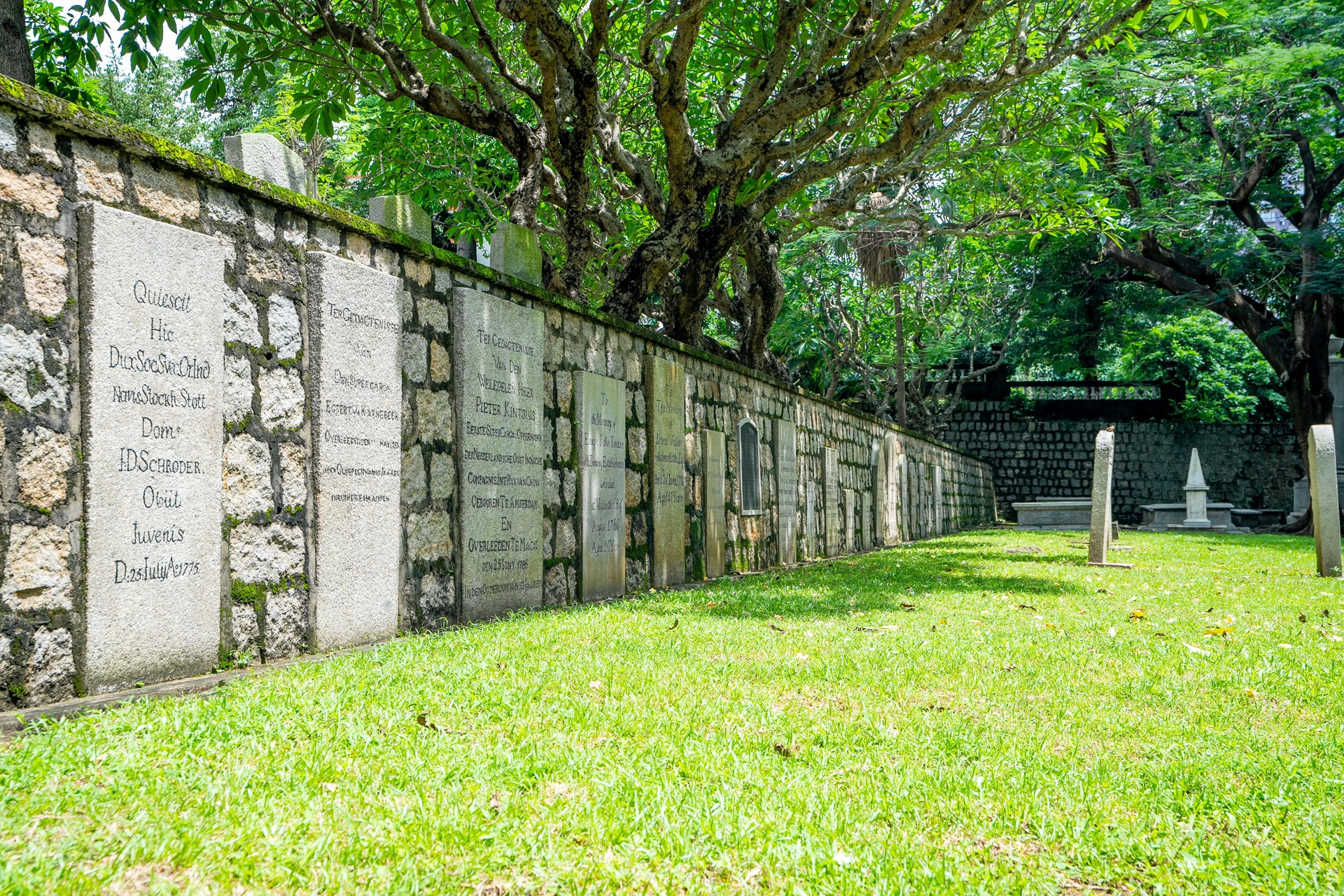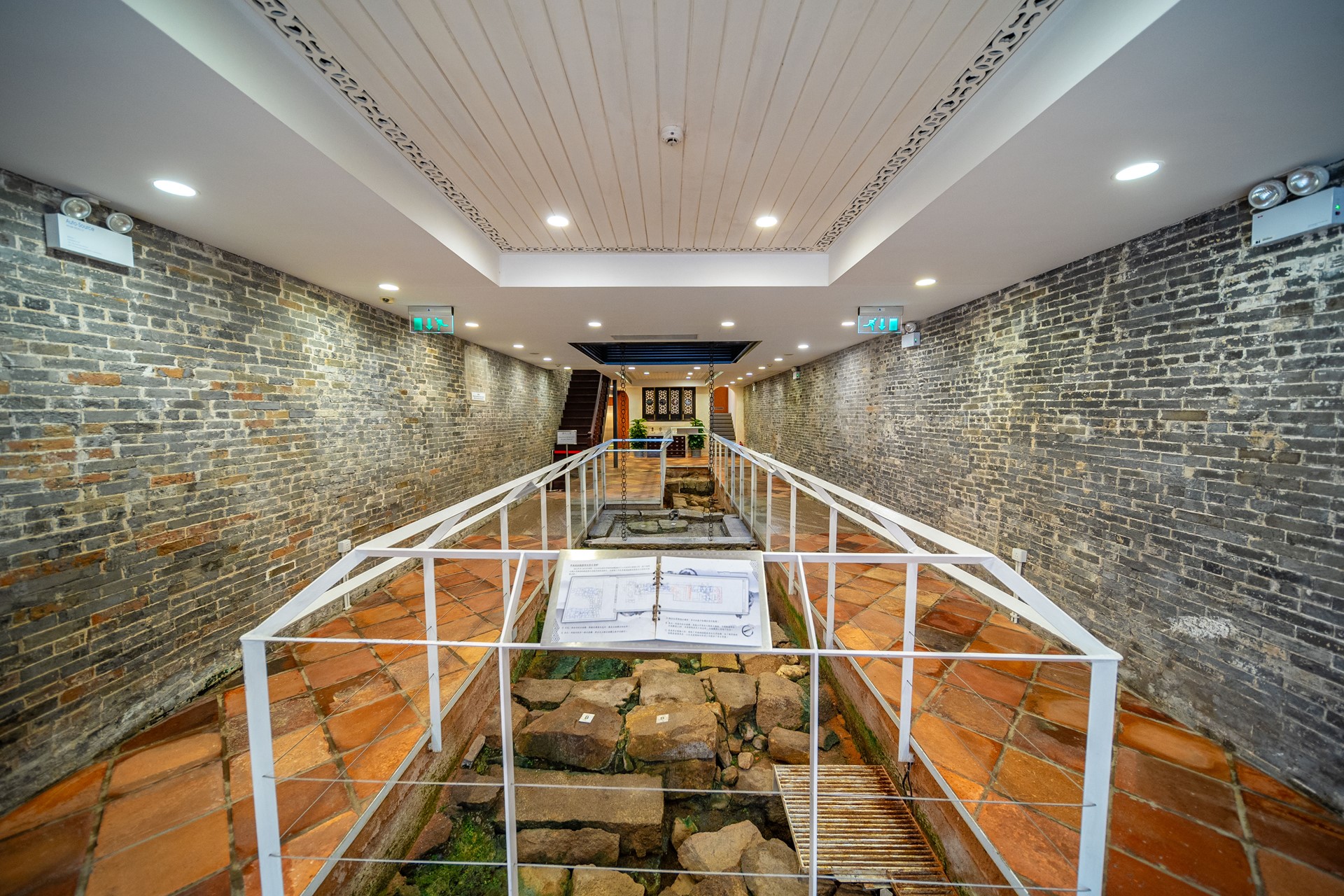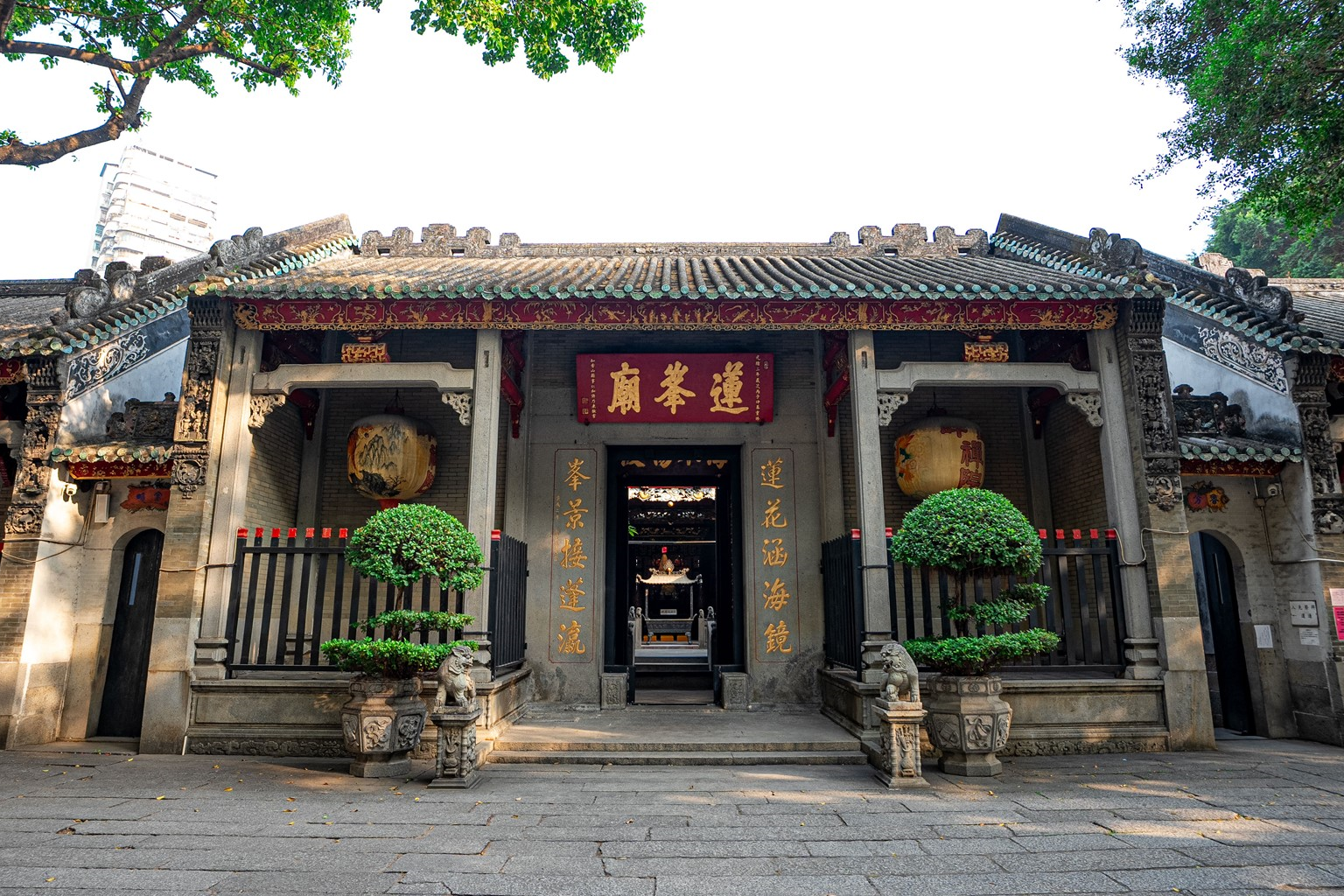The Protestant Cemetery, located next to Luís de Camões Garden, is mainly composed by a front courtyard garden area and the cemetery area itself. The Morrison Chapel is located in the front area and has been used as a place of worship for the protestants in Macao since 1830, having been renovated in 1922. The chapel has a rectangular plan, and a modest exterior with simple white-painted walls. The cemetery, located behind the chapel, is divided into an upper level and a lower level. There are over 180 tombs of individuals, mostly from Britain and the United States, but also from the Netherlands, Sweden, Denmark, and other countries, including merchants, adventurers, missionaries, sailors, officers and soldiers.
From the mid-18th century, the Qing government’s new foreign trade policy, enacted after 1773, enabled other foreign citizens to reside in Macao, which attracted many European and American firms and envoys, including the British East India Company, to set up branches in the city. This company had long enjoyed a monopoly on British trade with China, conducting all early Sino-British trade. In 1807, Rev. Robert Morrison (1782-1834) arrived in Macao to occupy the position of Chinese interpreter for the British East India Company, regularly travelling between Canton (Guangzhou) and Macao, for both missionary work and business. Morrison was the first to translate the Protestant Bible into Chinese, and was also the author of the first Chinese-English dictionary. With more and more Protestants residing in Macao, it was urgent to find a suitable place for the burial of their deceased. In 1821 when his wife Mary Morrison died in Macao, and at the request of Robert Morrison, the British East India Company acquired a land plot near Camões Square, for the burial of its staff and other Protestants deceased in Macao. The cemetery was later closed to new burials, in 1857, following a notification by the Macao Portuguese administration, thus ending its 36 years of operation. It remains intact to this day.
The Qing dynasty’s Canton System policy required foreigners to leave Guangzhou for a Macao sojourn during non-trading season, and therefore various foreign firms and governments set up offices, consulates, and other public facilities in Macao, thus boosting its economy. In the cemetery are buried such renowned people, such as Robert Morrison and his family, the British artist George Chinnery (1774–1852), and Anders Ljungstedt, the Swedish Consul General to China and author of An Historical Sketch of the Portuguese Settlements in China, all of whom made important contributions to Sino-Western cultural exchanges. The Protestant Cemetery is not only a tangible memory of some of the western people who were directly involved in relevant cultural exchange activities in Macao and in the Pearl River Delta region, but also serves as a testament to Macao’s role in the context of the Maritime Silk Road, as a bridge to exchanges between Chinese and Western cultures.
